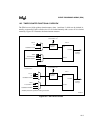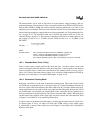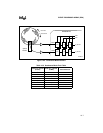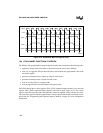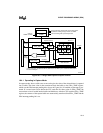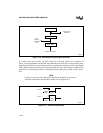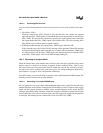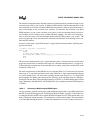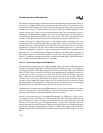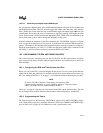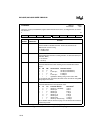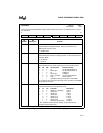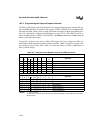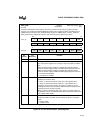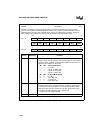
10-13
EVENT PROCESSOR ARRAY (EPA)
The maximum output frequency depends upon the total interrupt latency and the interrupt-service
execution times used by your system. As additional EPA channels and the other functions of the
microcontroller are used, the maximum PWM frequency decreases because the total interrupt la-
tency and interrupt-service execution time increases. To determine the maximum, low-speed
PWM frequency in your system, calculate your system's worst-case interrupt latency and worst-
case interrupt-service execution time, and then add them together. The worst-case interrupt la-
tency is the total latency of all the interrupts (both normal and PTS) used in your system. The
worst-case interrupt-service execution time is the total execution time of all interrupt service rou-
tines and PTS routines.
Assume a system with a single EPA channel, a single enabled interrupt, and the following inter-
rupt service routine.
;If EPA0-3 interrupt is generated
EPA0-3_ISR:
PUSHA
LD EPA
x
_CON, #toggle_command
ADD EPA
x
_TIME, TIMER
x
, [next_duty_ptr]; Load next event time
POPA
RET
The worst-case interrupt latency for a single-interrupt system is 56 state times for external stack
usage and 54 state times for internal stack usage (see “Standard Interrupt Latency” on page 6-8).
To determine the execution time for an interrupt service routine, add up the execution time of the
instructions (Table A-9).
The total execution time for the ISR that services interrupts EPA3:0 is 79 state times for external
stack usage or 71 state times for internal stack usage. Therefore, a single capture/compare channel
0–3 can be updated every 125 state times assuming internal stack usage (54 + 71). Each PWM
period requires two updates (one setting and one clearing), so the execution time for a PWM pe-
riod equals 250 state times. When the input frequency on XTAL1 is 25 MHz and the phase-locked
loop is disabled on the 80C196NU, the PWM period is 20 µs and the maximum PWM frequency
is 50 kHz.
10.4.2.2 Generating a Medium-speed PWM Output
You can generate a medium-speed, pulse-width modulated output with a single EPA channel and
the PTS set up in PWM toggle mode. “PWM Toggle Mode Example” on page 6-27 describes how
to configure the EPA and PTS. Once started, this method requires no CPU intervention unless you
need to change the output frequency. The method uses a single timer/counter. The timer/counter
is not interrupted during this process, so other EPA channels can also use it if they do not reset it.



